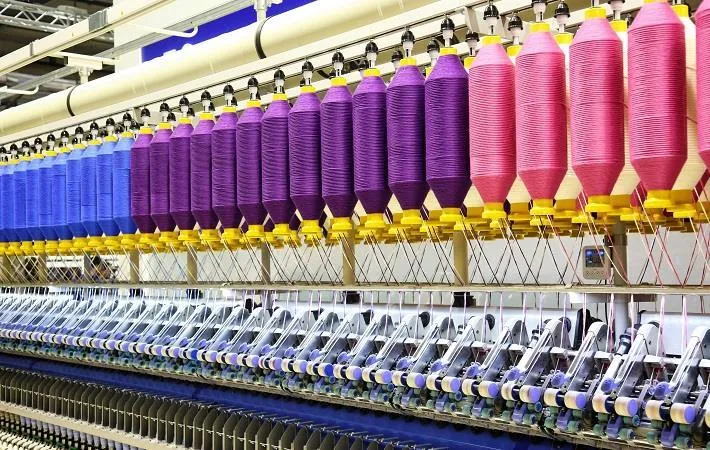Gujarat's Textile Policy 2024: A Game-Changer for Surat's MMF Industry
The much-anticipated Gujarat Textile Policy 2024 has been unveiled, sparking excitement among textile entrepreneurs in Surat, India's largest hub for man-made fibre (MMF). After a 10-month delay following the expiration of the previous policy in December 2023, the new policy introduces robust financial incentives designed to strengthen the textile industry not just in Surat but across Gujarat. This comprehensive policy is expected to reinvigorate the sector, positioning Surat for further growth and increased competitiveness in the global market.
Key Highlights of the Gujarat Textile Policy 2024
The newly launched policy introduces several groundbreaking measures, most notably a 25% capital subsidy, a feature not included in prior policies. This new subsidy is a significant shift, offering direct financial relief to textile entrepreneurs by covering a portion of their capital expenditure. For example, if an entrepreneur invests Rs 100 in their textile business, they will now receive Rs 25 from the government as a subsidy. This reduces the financial burden and encourages further investment in the region.
In addition to the capital subsidy, the policy includes a Rs 1 per unit power subsidy for all textile units, ensuring energy cost relief across the industry. While the interest subsidy has been reduced from 5% to 2%, the overall package is designed to deliver significant economic support. The Gujarat government has allocated Rs 1,107 crore to support approximately 5,592 textile units in Surat and other districts, ensuring that both established and new businesses can benefit from these incentives.
Impact of Capital Subsidies and Financial Incentives
The introduction of the capital subsidy is seen as a game-changer for Surat’s textile industry. Unlike previous policies that primarily focused on interest and power subsidies, this direct financial assistance will allow businesses to modernize and expand more easily. The capital subsidy offers entrepreneurs a financial cushion, which is particularly beneficial for smaller businesses or those looking to upgrade their machinery.
This policy is a marked improvement over previous iterations. The 2019 Textile Policy, which provided a 6% interest subsidy and up to Rs 30 lakh for small machinery purchases, did not include a capital subsidy. Similarly, the 2012 Textile Policy offered subsidies for interest and power costs but left entrepreneurs to cover significant upfront expenses for capital investments. By addressing this gap, the 2024 policy is expected to encourage new investment and growth in the region.
Challenges of Policy Delays and Competitive Pressures
The delay in announcing the new policy had consequences for the Surat textile industry. During this gap, around 160 textile units relocated to neighboring Maharashtra, attracted by lower electricity rates and other incentives provided by the Maharashtra government. This exodus highlighted the need for competitive and timely policy measures to retain Surat’s position as a leading textile hub.
Mayur Golwala, a leader in the Surat textile industry, pointed out that this migration underscored the need for a more strategic and forward-thinking approach. “The delay in announcing the new textile policy led to notable consequences, with several units relocating to Maharashtra. The new capital subsidy is a step in the right direction to prevent further loss and boost local industry growth,” Golwala said.
Surat's Textile Industry: Strengths and Infrastructure Challenges
Despite these setbacks, Surat remains a significant player in the textile sector, particularly in the production of sarees and dress materials, which are exported both domestically and internationally. However, the city’s ability to scale and compete on the global stage is limited by its infrastructure challenges.
Surat’s growth has been constrained by the lack of comprehensive facilities, including dedicated textile parks and world-class infrastructure, which are vital for large-scale production. Countries like China and Bangladesh, with their advanced textile infrastructure, have outpaced Surat, particularly in garment manufacturing. Bangladesh, for instance, has surged ahead in garment exports, even though Surat is capable of producing high-quality textiles.
To fully capitalize on its potential, Surat will need significant investment in infrastructure to compete with international competitors. The new textile policy is a step in the right direction, but without addressing infrastructure deficiencies, Surat’s growth may continue to be stifled.
Focus on Skill Development and Garment Manufacturing
In response to these challenges, local industry leaders are taking proactive steps to enhance the workforce’s skills. The Southern Gujarat Chamber of Commerce and Industry (SGCCI) has announced plans to launch a Skill Development Center aimed at training workers to operate modern machinery and improve their technical expertise. This initiative is crucial, as the industry transitions toward garment manufacturing, which has the potential to expand Surat's market reach even further.
With local industrialists increasingly looking towards garment production, there is a growing need for skilled labor to meet the demands of this shift. The Skill Development Center will play a key role in preparing Surat’s workforce for the future of textile and garment manufacturing, ensuring that the city remains competitive both domestically and internationally.
The Gujarat Textile Policy 2024 marks a significant milestone for Surat’s textile industry. By introducing a 25% capital subsidy and extending power subsidies, the policy aims to attract new investments and support the growth of existing businesses. However, challenges remain, particularly in terms of infrastructure development and competition from neighboring regions and countries. With additional focus on skill development and garment manufacturing, Surat has the potential to reclaim its position as a global leader in the textile sector.
